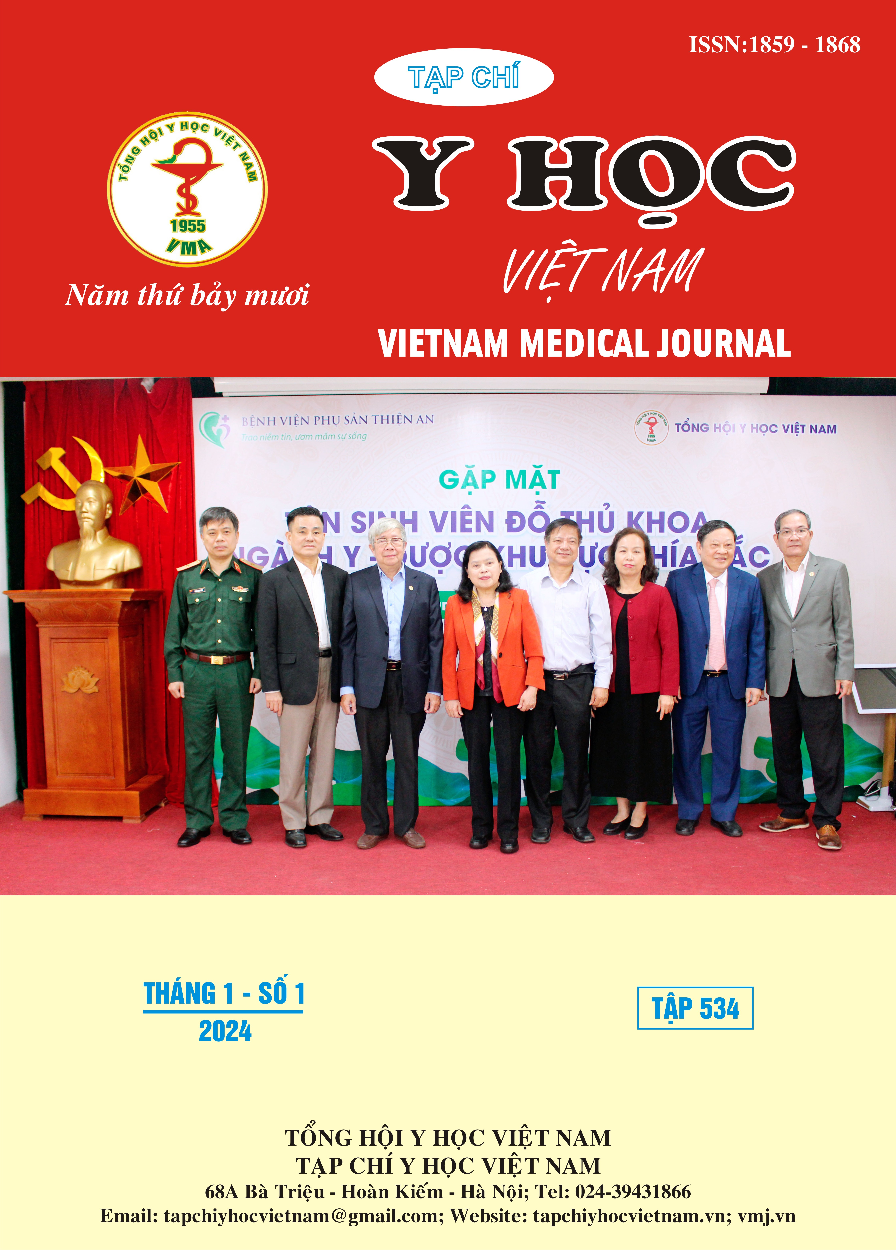TREATMENT OUTCOMES OF TRAUMATIC PARENCHYMAL HEMATOMAS IN THE ELDERLY
Main Article Content
Abstract
Objectives: To assess the rate, clinical symptoms, computed tomography scans and treatment outcomes of traumatic parenchymal hematomas in the elderly. Methods: A descriptive cross-sectional study was conducted among 100 elderly patients suffered from traumatic parenchymal hematomas treated at the Neuro-Spine Surgery Department of Thai Binh General Hospital between April 2021 and December 2022 Results: 100 geriatric patients with traumatic parenchymal hematomas including 76 males (76%), 24 females (24%). The average age was (70.20 ± 8.49) years old, (from 60 to 93). Traffic accidents were the most common cause (51%); followed by falls (46%), occupational accidents (3%). Mild patients (GCS: 13-15 points) accounted for 86%,the moderate (GCS: 9-12 points) added up to 10%, and the severe (GCS: 3-8 points) remained 4.0%. Associated injuries included acute subdural hematoma (48%), subarachnoid hemorrhage (48%). 21% had 2 hematomas. The majority of patients were treated by nonsurgical therapy (91%), only 4% received intensive resuscitation and 5% had surgical evacuation of intracerebral hematomas. Hospital discharge conditions were good (75%), fair (13%), moderate (3%), vegetative state and death accounted for (9%). Conclusion: Traumatic parenchymal hematomas in the elderly occur more often in males than in females, the two main causes are traffic accidents and falls. Nonsurgical therapy plays a key role. The rate of vegetative survival and death is 9%.
Article Details
References
2. S. Wilkes et al., “Evolution of Traumatic Parenchymal Intracranial Hematomas (ICHs): Comparison of Hematoma and Edema Components,” Front. Neurol., vol. 9, 2018, Accessed: Sep. 09, 2023. [Online]. Available: https://www.frontiersin.org/articles/10.3389/fneur. 2018.00527
3. C. Hawley, M. Sakr, S. Scapinello, J. Salvo, and P. Wrenn, “Traumatic brain injuries in older adults-6 years of data for one UK trauma centre: retrospective analysis of prospectively collected data,” Emerg. Med. J. EMJ, vol. 34, no. 8, pp. 509–516, Aug. 2017, doi: 10.1136/emermed-2016-206506.
4. R. C. Gardner, K. Dams-O’Connor, M. R. Morrissey, and G. T. Manley, “Geriatric Traumatic Brain Injury: Epidemiology, Outcomes, Knowledge Gaps, and Future Directions,” J. Neurotrauma, vol. 35, no. 7, pp. 889–906, Apr. 2018, doi: 10.1089/neu.2017.5371.
5. H. Karibe, T. Hayashi, A. Narisawa, M. Kameyama, A. Nakagawa, and T. Tominaga, “Clinical Characteristics and Outcome in Elderly Patients with Traumatic Brain Injury: For Establishment of Management Strategy,” Neurol. Med. Chir. (Tokyo), vol. 57, no. 8, pp. 418–425, Aug. 2017, doi: 10.2176/nmc.st.2017-0058.


